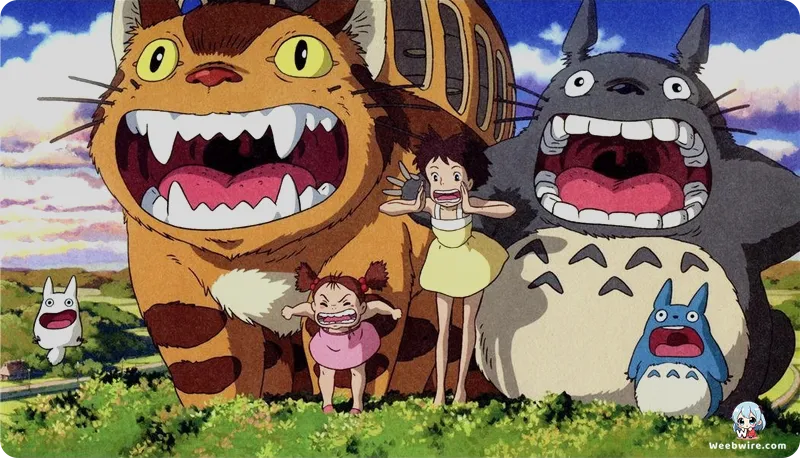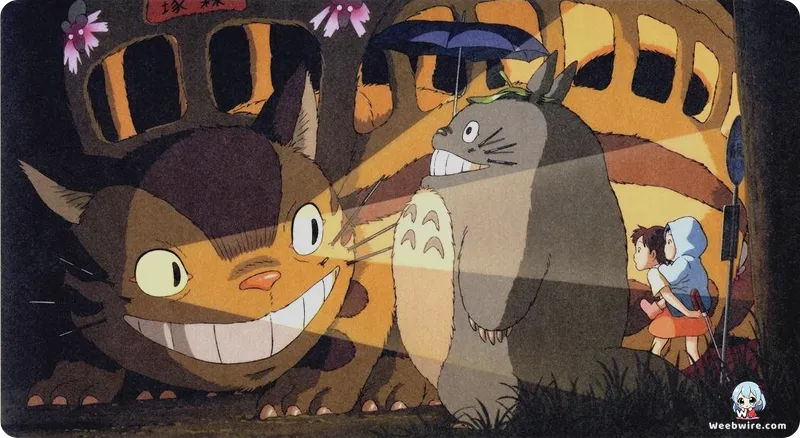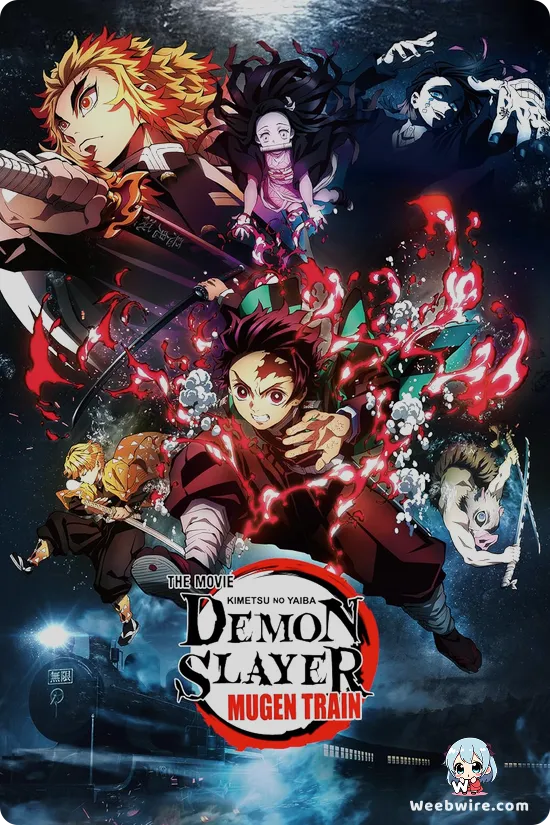The Enduring Magic: Unveiling the Hidden Secrets of Studio Ghibli's My Neighbor Totoro

Studio Ghibli's 1988 masterpiece, My Neighbor Totoro, continues to enchant audiences worldwide, transcending generations with its profound artistry and heartwarming narrative. This cinematic gem, directed by the legendary Hayao Miyazaki, weaves a captivating tale of childhood wonder, imagination, and the mystical connection between humanity and nature. Beyond the surface of sisters Satsuki and Mei's delightful adventures with magical forest spirits in post-war rural Japan, the film is rich with fascinating details and hidden depths that underscore its timeless appeal and enduring legacy.
The Whimsical Origins of Beloved Characters
One of the most charming secrets lies within the very name of the titular forest spirit. Totoro, the beloved creature, derives its name from Mei's adorable mispronunciation of 'tororu' (トロル), the Japanese word for 'troll.' This delightful linguistic detail immediately sets the tone, emphasizing the film's unique perspective through the innocent eyes of a child. Totoro's iconic design itself is a masterful blend of various creatures, drawing inspiration from owls, cats, and even tanukis (Japanese raccoon dogs). This fusion creates a being that is both fantastical and deeply rooted in Japanese folklore, making Totoro an instantly recognizable and endearing figure.
Equally imaginative and perhaps even more whimsical is the Catbus, a truly unique creation that has become one of animation's most recognizable vehicles. This fantastical mode of transport is a brilliant fusion of Lewis Carroll's enigmatic Cheshire Cat, with its wide, knowing grin, and a traditional Japanese train. The Catbus perfectly embodies the film's magical realism, blurring the lines between the mundane and the extraordinary, and offering a delightful sense of boundless possibility within the enchanting forest.
A Narrative Born from Dual Perspectives
The film's protagonists, the sisters Satsuki and Mei, were not always conceived as two separate characters. Initially, Hayao Miyazaki envisioned a single child as the central figure. However, he wisely realized that splitting the protagonist into two sisters allowed for a much richer and more nuanced exploration of childhood perspectives and emotional responses. Satsuki, the elder sister, embodies responsibility, maturity, and a protective instinct, navigating the challenges of their mother's illness with quiet strength. Mei, the younger, represents pure, unadulterated childlike wonder, curiosity, and an unshakeable belief in magic. This dynamic creates a deeply resonant sisterly bond that anchors the entire story, providing both emotional depth and relatable experiences for viewers of all ages.
A Personal Touch and Environmental Echoes
The idyllic 1950s rural setting of My Neighbor Totoro is deeply personal to Miyazaki, reflecting his own childhood experiences and his profound reverence for nature. The Kusakabe family's move to a dilapidated house nestled amidst ancient camphor trees beautifully portrays a simpler life, intimately intertwined with nature's mysteries and rhythms. This setting subtly conveys an important environmental message, highlighting the beauty and importance of preserving natural landscapes and fostering a harmonious relationship with the world around us. The film encourages viewers to appreciate the magic that can be found in the everyday, particularly within the natural world.

Debunking Dark Theories and Embracing Pure Imagination
Despite its gentle and heartwarming tone, My Neighbor Totoro has, over the years, been subjected to various darker fan theories, most notably the unsettling idea that Totoro is a god of death and that the sisters, Satsuki and Mei, are deceased. These theories often cite misinterpreted visual cues or symbolic elements. However, Studio Ghibli has unequivocally and repeatedly debunked these rumors, stating there is “absolutely no truth” to such interpretations. They firmly assert that Totoro is simply a kind and benevolent forest spirit, and the film remains a heartwarming story celebrating childhood, imagination, and the power of family bonds. This clarification reinforces the film's intended message of hope and wonder.
An Enduring Legacy and Cultural Icon
The cultural impact of My Neighbor Totoro is nothing short of immense. Totoro himself has become Studio Ghibli's official mascot, serving as a global ambassador for Japanese animation and an enduring symbol of childhood wonder and innocence. Its influence permeates popular culture, from merchandise to artistic homages, solidifying its place as a cornerstone of modern animation. For devoted fans eager to delve deeper into this magical universe, an exclusive 14-minute sequel, Mei and the Kittenbus, exists. This short film, a delightful continuation of the story, is shown only at the prestigious Studio Ghibli Museum in Mitaka, Japan, making it a rare and cherished experience for those fortunate enough to visit.
Joe Hisaishi's iconic musical score is an absolutely integral component of the film's profound charm and emotional resonance. His whimsical and evocative melodies perfectly capture the wonder, tranquility, and occasional moments of gentle melancholy that define the film. The main theme, in particular, is instantly synonymous with Studio Ghibli's unique brand of magic. Hisaishi's masterful blend of traditional Japanese elements with classical orchestration creates a timeless soundtrack that not only enhances the film's emotional depth but also stands alone as a beautiful work of art.
Finally, My Neighbor Totoro is celebrated for its timeless artistry and meticulous craftsmanship. The hand-drawn animation, a hallmark of Studio Ghibli, imbues every single frame with a vibrant, organic quality that is increasingly rare in contemporary animation. The lush, detailed landscapes, the intricate depiction of the dilapidated house, and the expressive, nuanced characters all contribute to an immersive visual experience that transports viewers directly into this enchanting world. While its original double-feature release with the starkly contrasting Grave of the Fireflies showcased Ghibli's incredible versatility, it was Totoro that ultimately became a cherished touchstone for generations, a film that continues to resonate deeply with audiences worldwide. These layers of hidden meaning, artistic brilliance, and heartfelt storytelling only deepen its enduring legacy, ensuring its place as an undisputed classic.
Credits
My Neighbor Totoro
Author
Hayao Miyazaki
Cover Art
Hayao Miyazaki
Studio
Studio Ghibli
Publisher
Tokuma Shoten
Producers





